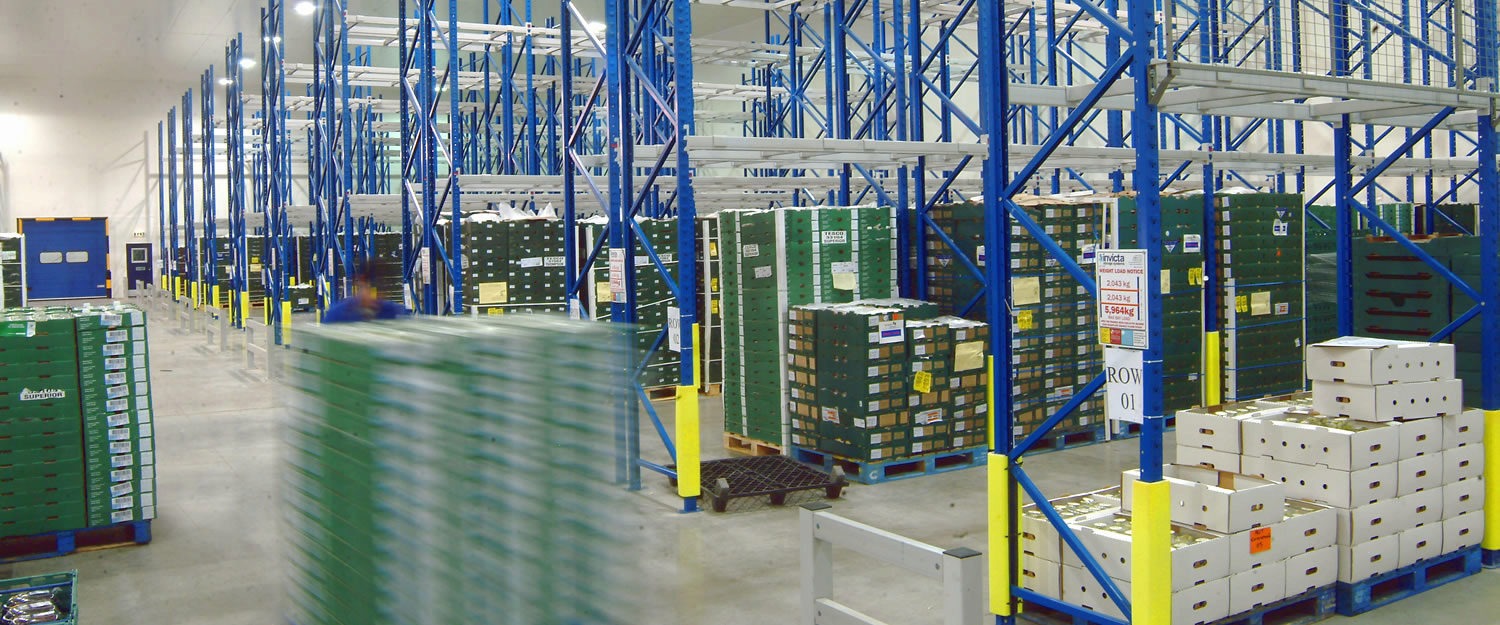For your information
You are being redirected to one of our divisional subsites which contains more detailed information on the required division. To navigate back to the main Invicta Group site, please click the link found in the footer at the bottom of the page.
Racking collapse videos should be a warning, not a joke
22nd April 2022
Learning from mistakes
Quick Quote
Contact Mick Coyne
To get a quotation or arrange a free site survey - Call Mick Coyne on
-
 UK
UK
Current location:
Quick Quote
Contact Mick Coyne
-
 UK
UK
Current location:
If you follow any social media feeds around warehousing and logistics, you’ll likely have seen your fair share of racking collapses. Videos of racking failures in warehouses around the world pop up every few months, each a fresh disaster with a familiar look. The latest one has just emerged from Krasnoyarsk, a city in central Siberia, and has garnered thousands of views online.
These disasters are sometimes painted as cautionary tales, but just as often a source of schadenfreude. People often look at videos like this latest one as something that only happens elsewhere, under lax local laws and a poor safety culture. Yet such disasters are less remote than people often think, and often due more to complacency than legislation. Instead of gawping, we should take notes – and redouble our own efforts.
Safety and social media
Where trade stories once circulated over pints and around sites, the internet has made a show out of everyday life. Popular pages like On The Tools have made a business out of collecting images and clips of rogue traders, dodgy builders and pratfalls on jobs and worksites, many of which would send any safety officer into a frenzy.
Meme and joke pages like these take a lighthearted look at life in a variety of industries, and often pride themselves on a culture of ‘banter’ that’s ingrained in the industry, at least in the UK. But the unfiltered, non-PC slant of these pages can tilt into poor practice, and anti health & safety sentiments. While there’s clearly a line between having a bit of fun and doing something blatantly unsafe, social media has a habit of magnifying the worst opinions, and undermining the value and importance of site safety.
Conversely, there are also pages that exist to trumpet good work and shame shoddy work, including unsafe practices. Many of these are operated by businesses, who end up being drafted in to fix someone else’s poor (and often dangerous) handiwork. The question is: how much of this translates to actions, and reporting the people responsible, or encouraging others to improve their work? When social media turns safety into a show, to what extent does it actually inform people’s behaviour?
The state of racking safety
Racking safety gets plenty of attention, but the main points bear repeating. It’s still a common assumption, for instance, that the main factor in preventing a racking collapse (or other serious incident) is to simply build the racking properly. It can be so hard to imagine a huge, solid unit of interlocking metal beams falling down, when it’s used every day with no issues, that the very possibility of it failing becomes alien to us.
Good racking construction is certainly part of the equation. This will not only ensure that it is structurally sound, but that it is able to safely support the loads that it will be required to bear. But again, it isn’t just a case of dodgy companies in less developed countries. A racking collapse could just as easily happen here or in any other major nation, and occasionally does. More often than not, it’s only barely avoided.
Anecdotally, the industry is full of stories of major companies who, upon having their racking inspected, find that it is so badly damaged as to need major repairs or replacements. This isn’t to say that they weren’t acting safely, or applying the law correctly, but that racking safety is a broadly neglected and misunderstood topic. Moreover, racking damage can be difficult to spot if you don’t know what you’re looking for – particularly when a warehouse is in perpetual use, and racks are constantly covered.
Keeping racking safe
So what can be done to improve racking safety? An obvious example is training. Racking safety awareness training provides warehouse operatives with a set of key principles to avoid racking damage, as well as the knowledge to identify issues, and the confidence to report them. Frontline workers are the first line of your defence against racking issues, and training them to avoid issues and spot developing ones will always be the best way to improve safety.
Beyond this, racking safety becomes a cultural issue. On the one side, you have the issue of general attitudes towards health & safety. While most people in a warehouse will have had to take some form of mandatory safety training, the specifics of this might vary, as may the frequency of refresher training. It’s exceptionally easy to fall into a pattern of ignoring issues or missing steps in a safe routine because nothing went wrong the first time you did it, and forgetting the safe working principles you were taught.
On the other side, you have the perception of racking itself. The large steel constructions often feel so solid and so much a fixture of the building that it’s about as likely that the building itself will fall down. While properly installed and maintained racking should be reliable, racking is unique from a safety perspective, as it’s constantly loaded and unloaded with major forces that apply loads across the superstructure. You wouldn’t be blasé about dropping heavy objects onto or driving into a bridge that you were stood under, and the same principle applies here.
—
Safety is never going to excite people as much as a video of when safety goes wrong. But gawping at footage from a far-flung nation and assuming it could never happen here is equally dangerous. This complacency and attitude towards safety is something that festers and grows over time, and could undermine the many positive strides that have been made in recent years.
The emergence of videos like these should be a rallying point for the industry and safety professionals at large. Far from being an amusing diversion, they should be a demonstration of how something we rely on everyday can easily turn into a major safety hazard – and a reason for warehouse operatives and managers alike to look at their racking a bit more carefully.
Accreditations & Affiliations







Start your project
Tell us about your project. Please complete this form. One of our sales team will come back to you with more details. If you prefer, you can drop us an email.




Share/Like this page